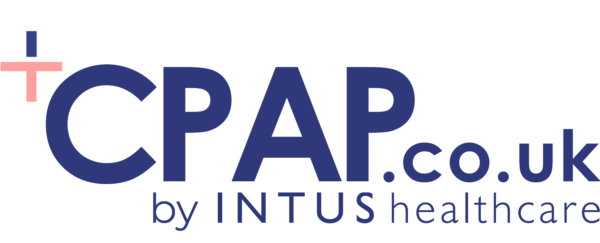Last updated on April 28th, 2023 at 04:26 pm

Once you start using your CPAP device, you expect to start feeling the effects right away. The pressurized air should give you a good nights of sleep once again, reducing your risk of the symptoms linked to the disorder, as well as reducing the risk of the serious health problems sleep apnoea can cause.
However, although CPAP is a leading solution used for sufferers of obstructive sleep apnoea, people can respond to treatment in different ways and not everyone may see its benefits straight away.
Problems Adjusting to CPAP
Adjusting to pressurized air.
When you begin with CPAP, the device supplies a continuous stream of steady pressurised air as you sleep and will have a setting in relation to air pressure level. This setting remains constant through the night and if you cannot get used to this air pressure level then it may need adjusting.
Another possible solution which might be recommended is an APAP machine which automatically adjusts to the correct air pressure level as you sleep. This type of device typically has two settings which it will alternate between, automatically adjusting itself to adapt to your needs at any given time in the night.
Adapting to the mask.
The equipment can take a bit of getting used to for some people. Not only can wearing a mask while you sleep feel unnatural, breathing in pressurised air can also seem strange and off-putting.
However, to reap the rewards this therapy offers it is important to persist with the treatment plan and find ways with your doctor to make the equipment more comfortable and work for you.
It can be useful to practice wearing the mask during the evening prior to going to bed to get used to its feel. You can do this over a series of evenings, building up the time spent using the device and mask to try and desensitise yourself to its presence.
If you need to take a nap in the afternoon, try doing so while using your CPAP device.
Does the mask fit right?
The mask is a critical part of the treatment and it needs to be comfortable and fit properly. Make sure you wear a mask which is neither too tight or too loose, both of which can add unnecessary pressure to the surrounding skin.
Through your doctor or CPAP supplier you should be able to select a mask which is right for you from the various available options.
For those who breathe through the nose a nasal pillow or nasal mask may be the best solution, while those who breathe through their mouths may require a full-face mask covering both the nose and mouth.
You can also obtain accessories such as straps, mask liners and creams which can help make the process more comfortable.
Wearing the mask right through the night.
It is important to ensure you wear your CPAP mask the whole time you are sleeping. If you remove the mask during the night for any reason you may not feel the full benefits of the therapy.
Sometimes when you wake up in the night while using CPAP, there may be a temptation to remove the mask, particularly if you are still adjusting to its presence.
However, the final third of a night is when we experience rapid eye movement (REM) and when we are more prone to dreaming. To counter this and help prevent acting upon these dreams our muscles relax. This helps explain why sleep apnoea can be worse during this stage of the night, as the tissues in the airways are more susceptible to collapse as the muscles relax. If you have removed the CPAP mask by this stage, you will not be able to assess how much benefit the treatment is providing.
You might also find you are removing the mask during the night subconsciously as you sleep. The reason why this may be happening will need examining, but it could be due to you still not being used to the mask or the mask being ill-fitting.
Both these issues can be remedied, but if you are still unknowingly removing your mask during the night you could set an alarm at a point of time to check it is still being worn. This may seem counter-intuitive when the mask is geared towards preventing interruptions to sleep, but if the mask has been removed it is likely the symptoms of sleep apnoea will return including the frequent awaking for air.
Over time as you become more used to the CPAP device and mask these accidental removals of the mask should lessen and hopefully stop altogether.
Experiencing Further Sleep Disorders
For some people further sleeping issues can arise even while undergoing CPAP therapy. This can again be a reaction to the unnatural feel of the constant stream of air forced through the mask to keep the upper airways open.
This supply of air can cause a reaction where you find yourself naturally holding your breath, opposing the air being supplied by the CPAP device. An outcome of this is a cessation of breathing for up to 10 seconds with no movement of the chest or abdomen and without persistence of obstructive sleep apnoea.
This is now a different condition termed complex sleep apnoea and is hard to spot. This condition should correct itself in time providing CPAP is persisted with.
If it does not, then Bi-level therapy may be recommended instead, which uses two different pressure levels, a higher one when inhaling and a lower one for exhaling. This change in pressure depending on whether you are breathing in or out helps the lungs to operate more efficiently and discourages holding of the breath during the night.
Got Insomnia?
As one of the major symptoms of sleep apnoea is sleep deprivation and fatigue it can seem odd for OSA sufferers to experience insomnia. Yet it is quite common for someone with sleep apnoea to report they are suffering from insomnia, too.
A disorder such as insomnia can negate CPAP by preventing sleep in the first place or preventing you from getting back to sleep if you awake in the night.
Having to wear a mask which is forcing pressurised air in to the upper airways can add to the problem if you are experiencing insomnia first thing at night.
Exploring the reasons for your insomnia is key to combatting the disorder and cognitive behavioural therapy may be recommended if you have chronic insomnia. This therapy helps educate on sleep and the factors which can impact on its quality, providing a better understanding of how to address your sleep environment — without the need for sleeping pills.
The Importance of Persistence
Many people benefit from their CPAP device very soon after starting their treatment, returning to consistent good nights of sleep and reducing the symptoms of sleep apnoea such as heavy snoring.
Yet we are all individuals and everyone will respond to CPAP at a different pace depending on the severity of their disorder. Sometimes results will only become noticeable after weeks or months of therapy.
This means persisting with wearing the mask and using the CPAP device every night while asleep. Any night when it is not used can lead to the disorder returning, leading to frequent nightly interruptions to sleep again and increasing the risk of the serious health problems linked to sleep apnoea.
CPAP is not always an easy solution to adhere to, but persistence is key. There are a number of factors which can make it feel it is not working for you, or actually make you feel worse.
Consulting with your doctor or reaching out to a CPAP support group and talking to people who know exactly what you are experiencing can help overcome the initial setbacks and help you receive the treatment you require.
.post-view .post-entry p {margin:0 0 10px 0;}

